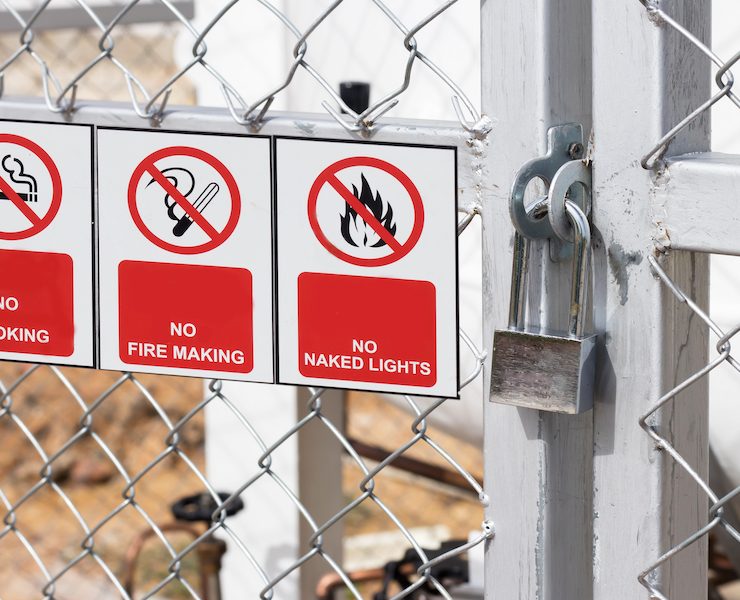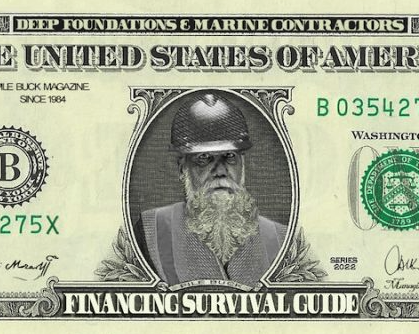Effective Early Management of Legal Risks for Contractors

How to Stay Out of Court by Early, Pro-Active Risk Management Systems – Yours
When a pile driving contractor bids a large project, often it literally “bets the company.” The contract, financial, and safety risks are potentially high. Against these steep risks, the contract forms, work procedures, insurance, and business relationships only provide so much comfort if something goes really wrong. Whether a differing site condition that triples the shifts, a specification that does not work, a tough owner or prime contractor, project delays, a crane accident or utility obstruction, somehow the finger pointing often seems to aim at the pile driving contractor, the one who is just doing his job, because at the bottom of the project “food chain.”
At yet, in this or any economy, there is little realistic opportunity to turn down a business opportunity to bid a risky job. Pile Drivers are known for “can do” attitude of “never give up” that reminds one of the Navy Team 6 that took out Osama Bin Laden. No failure is permitted. We will “get r’ done” as the famous Comedian Larry the Cable Guy is fond of saying.
So, what can the pile driver do to get the work and not get burned?
Here are a few bullet points to consider: HAVE A SYSTEM IN PLACE FOR REVIEWING THE PROJECT SPECIFICATIONS BEFORE YOU BID.
In the “old days” before so much bidding was done online and plans available in AutoCad, prime contractors would send out select sections of the project plans and specifications for the pile driver to bid from. This made it the prime’s role to decipher the plans for you. Not so nowadays. Now, prime contractors rely on subcontractors to decide what applies to their scope of work. I have a recent example where the excavation specification section contained access requirements precluding use of a temporary trestle for a marine dock construction for environmental reasons. The pile driver did not realize that access had that limit, and bid anticipating using a trestle, only to learn the hard way later. Oops. So, the take away, is have a checklist of your expectations in your bid, present it to the prime, get the full specifications, and do not assume all the project requirements affecting pile driving are all contained within the piling specifications 2300, and general conditions alone.
More generally, have a process during bid review. Pass out highlighters and post its, and have a bid team review to cross check all critical bid assumptions. Have someone summarize the key specifications, into a cut and paste document for ease of use. Make sure your project superintendent and foreman have that on site, and in their hand held personal digital device or I phone. Too often, the onsite folks do not have the game plan from the bid team. Instead, be like an NFL team — the QB has the plays written onto his wrist guard, and between plays he gets photographs taken from the coach’s booth to examine the field conditions. Integrate your execution, planning, bidding and financial teams, or lose money, time, or both. Use those techniques to have your team on the same page at all times.
KNOW WHO YOU ARE DEALING WITH – THE PRIME CONTRACTOR AND THE OWNER. THINK LIKE A LENDER – YOU ARE ONE.
Construction is a business populated by “can do” folks who have deep and deserved pride in what they build. There is a deep, and intuitive sense of teamwork on a successful project, that like the great Kevin Costner Movie “Field of Dreams”, “if you build it, they will pay.” But let’s remember, that was just a movie. Unlike that movie, you are in the real world of shrinking bank accounts, fewer projects, insolvent state and local governments, and a growing number of defunct or near comatose contractors without capital or cash flow, and who underbid just to stay alive. They may not want to pay you. They may not be able to pay you even if they want to.
This is where a bit of old fashion, Tony Soprano underwriting comes in. Tony knew daily where everyone was at financially. His credit check might be having lunch in your restaurant and seeing if you were busy. Not that much different that the former Federal Reserve Chairman Alan Greenspan would do, by looking at trucking in Des Moines, or imports of high tech goods, he could predict the direction of the economy months out. Pay attention to your gut, and follow up.
Some ideas to think like a lender, and check out the finances and litigation history of the prime contractor and owner — even someone you have worked with for years, as they go belly up, and can leave you stranded and unpaid. One, get on an online database to check litigation activity, unpaid tax liens and judgments. Find out their workers compensation modification rate and whether you can expect a loose or tight ship onsite in terms of safety — be fore-armed. Do not guess. You are betting the company that the prime and owner are square shooters, but also a gang that can shoot straight. Meet them in person, and be sure to use a Pre-Job checklist for all critical information about who the players are, owner, property address and Tax Assessor’s Parcel Number (APN), surety name and number, bond copy, and the like. Be quick to put a Scarlet Letter in Red on the billing file, and make it a “watch list” file, just like banks do with troubled credit relationships. Manage it. Make sure lines of communication remain open.
HAVE A BID FORM REVIEWED BY YOUR ATTORNEY, YOUR INSURANCE BROKER, AND YOUR BID TEAM TO INCLUDE KEY TERMS AND EXCLUSIONS TO SET YOUR EXPECTATIONS.
It is easy to get cynical as a subcontractor, facing “the battle of the forms.” You use a tried and true bid form, get the job by pricing it thin, praying that the job goes perfect and you do not lose your shirt, and then you get the job. Only then, you have shoved under your nose a telephone book thick subcontract that requires you to save the world, insure everyone, and agree to wait until 2025 to get paid, or when the polar ice caps have fully melted. It begs the question, why even bother negotiating select exclusions, like limiting scope of indemnity and insurance, exclusion of vibration risk damage, getting retention paid on acceptance of piling not the end of the project two years later, exclusion of utility location and protection, access terms, number of mobilizations or extra moves, traffic control, consent in writing to the project schedule, or language that “in cases of conflict or ambiguity our bid form controls”?
The simple answer is that by engaging in a dialogue, you are setting your project expectations about payment, safety, project quality control, and risk management. Some prime contractors may refuse to yield, for whatever reason. In such a case, eyes wide open you make a business decision to proceed or withdraw from contracting with that prime. If you proceed you plan accordingly. And, in the event of a blow up on an issue, you can remind the prime of the negotiation — not for “I told you so” bragging rights, but to underscore these are issues you see as their responsibility in terms of project management.
For pile driving clients, we develop a taut negotiating language that says, “we will pay for what we break, but we do not want to pay for what you break.” That, “we will control our risk, we expect you to control your risk and not ask us to absorb your QC. Deal?” Folks on the phone will “man up” to this. The contracting community respects “owning up” and “responsibility” even if later, when a dispute erupts, the lawyers and insurance companies adjusting a loss seem to just point fingers willy nilly — never my fault, dog ate my homework, etc. A good paper trail of the “college try” effort often works wonders in close out negotiations, inter-insurance adjustments, claims, and disputes. The concept is, be armed with good arguments and willing to walk from too much risk, and know where that is. If you buy off on extra risk, then treat the job like a NASA launch — with great care, and respect when the red lights go on.
SCHEDULE, DESIGN AND SOILS RISK, SUBMITTALS AND KEEPING PROJECT CHEMISTRY POSITIVE.
It is often said, a contract is something you look to when the parties no longer get along. While certainly true, know the claims, change order, notice and schedule terms of the contract documents as you go into the project. Be wary of submittal specifications that make it sound as if the pile fabricator is the pile designer. Beware of specifications that try to shift differing site condition risks to the contractor, and insulate the owner from owner controlled design risks. Most of all, be pro-active; professional, yet pro-active. Note and comment if the schedule has slipped, and why, and re-act and respond. Cut offs, depth, WEAP, set up, be in a dialogue with the engineer, and gain his or her respect that your team is more than just, “ours is to do and die, and not to wonder why.”
A comment about the danger of emails. The email is useful to communicate, yet, it is often resorted to when folks are “done talking.” It is anti-communication. If you sense that toxicity taking hold, pick up the phone and ask for a team meeting, the way folks used to. Use the beginning and end of the meeting to team build, and avoid accusatory language, contempt, or innuendo. Consider bringing in experts early to help convince project engineers as peers how to do it better. Turn the dialogue technical and away from the personal. It will get you the next job, and probably save you on this one.
OK, TIME TO GET PAID.
It often seems like root canal surgery is easier than getting paid your progress payments, retention and change orders amidst project controversy, or even disputes unrelated to your scope of work. The prolonged recession, and insolvent public agencies, and under capitalized prime contractors all make it worse. Getting paid can be a nightmare if not prepared with a game plan.
What is effective management of legal risks for contractors?
It is always important to review contract documents, legal forms, bid specifications, BOQ, insurance, and liability of given projects for any contractors before bidding. This gives clear direction about cost basis, the right equipment, risk assessment, duration, and safety in construction.

















